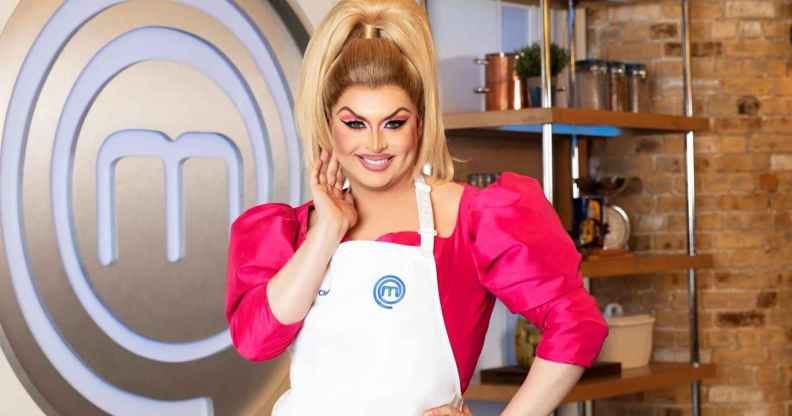Why Is It OK To Black-Face Women
When cultural decadence masquerades in a caricatured female form
I feel really, really, uncomfortable when I look at the picture of the Drag Queen Cheryl Hole who has been invited to compete on BBC’s Celebrity MasterChef. Not because he has been invited on this tedious television programme but because what I see is a grotesque caricature of a woman assuming the pose of a celebrity.
I know that there are many viewers who take the view that watching Luke Underwood-Bleach assuming the role of a drag queen, Cheryl Hole is a bit of a laugh. I am not laughing but feel my mind overcome by a sense of cultural dissonance. My immediate reaction is to pose the question ‘what is the difference between this spectacle and blacking-up?’.
When you look at Cheryl Hole and other drag queens what you see is not a genuine attempt to represent a woman but a piss-take version of a female. Moreover, what you get is a highly sexualised version of a woman, one that borders on the pornographic.
Cheryl Hole
As a sociologist I wonder when did this spectacle of studied misogyny turn into an entertainment format. At what point in time did the traditional British phenomenon of a pantomime dame mutate into the sexualised figure of a drag queen?
Within the theatrical tradition of pantomime, the over-the top style of the dame was not about sex. Their role was akin to that of the character of a clown, often playing the role of a comic protagonists in well-know children’s stories like Sleeping Beauty or Jack and the Beanstalk.
The Drag Queen bears little relationship to a pantomime dame. No one watching a pantomime could be in left in any doubt that what they are watching is a man pretending to be a woman. The Drag Queen phenomenon is s very different form of role playing, one that is integral to the project of promoting an ideology that asserts that with a whizz of a magical wand a man can be a woman.
Supporters of ideological outlook symbolised by the drag queen assert that what is at stake is just a bit of harmless fun that is akin to the pantomime phenomenon. They are particularly invested in exposing young children to the educational influence offered by drag queens. Through the medium of an uncontroversial sounding term ‘storytime’, set in a familiar local library, the drag queen movement cynically manipulates parent’s understandable aspiration for exposing their children to light-hearted reading. The supporters of the movement prey on this aspiration when they argue that the ‘performances are very similar to pantomimes, except they are explicitly literacy-focused and support inclusivity in communities and an interest in reading’.
The only similarity that ‘storytime’ performances have with pantomimes is that they both involve a man dressed up as a woman. Unlike ‘storytime’, a pantomime has no ulterior motive, other than to entertain its audience. A pantomime is a format that is entirely devoted to entertainment. A storytime performance by a drag queen is medium that exploits an entertainment format for the purpose of communicating a political message.
At a time when there is so much public discussion about the need to challenge misogyny and when some even go so far as to argue for its criminalisation why is the drag queen phenomenon given a free pass? Is it because transgenderism has acquired such a commanding influence that it has become a sacred cause? Or is because of the hypersexualised frenzy driving identity politics society is fast losing sight of what is means to be a woman?






Yes, Danit- there are some unspoken political agendas.
I agree with prof Furedi’s questioning. . It seems that in our times there are political agendas . Exempting certain behaves , something not alowed to everyone, is one of the very used strategies to support some groups.